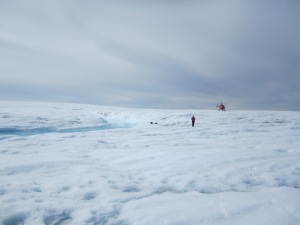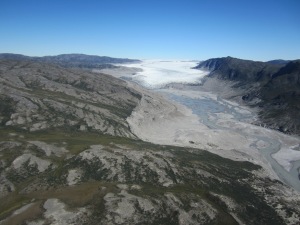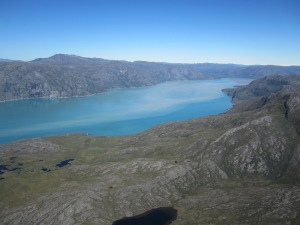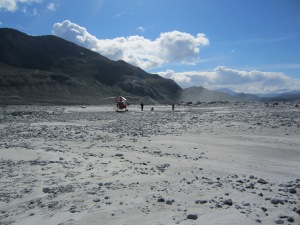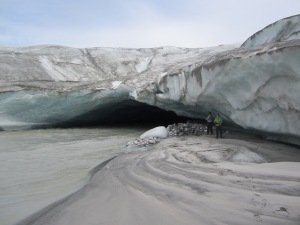
Sarah arrived on August 3rd ready to head into the field with us and brainstorm other locations that would provide data points of interest. After some long searches and strenuous hikes we found two excellent collection sites that had an obvious singular discharge channel at differing glacial outlets.





In order to save time and accelerate the sample analysis process, we brought our radon detector into the field with us (radon is an indicator of how long the subglacial water has been in contact with bedrock).
Additionally, we collected a surface sample of the Russell Glacier, which provided us with initial chemical compositions of ice and many photo opportunities.



On a side note, Kangerlussuaq is one of the best places in southern Greenland to have musk ox sightings and we had several chance encounters including one in which we unintentionally chased down a musk ox on our way back to the town of Kangerlussuaq.

As a result of only having a mode of transportation for several days we headed into the field bright and early on the day of our departure (August 5th) to collect water samples from several kettle lakes scattered around the ice sheet for future carbon and microbe measurements. Many of the lakes we stopped at had highly unusual characteristics (i.e. floating apple like fruit in one of them) which both confused and intrigued us but definitely made us excited to see the data that will come from the lakes.


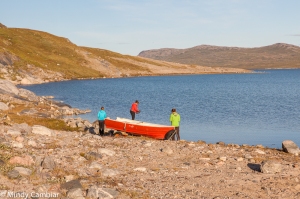
Kangerlussuaq was the most logistically challenging location we had faced and although we were quite relieved to be leaving that aspect of the region, we were a bit nostalgic about leaving behind the ‘perfect’ sampling sites we had ended up with.




